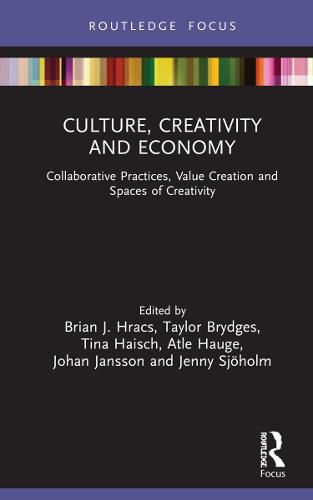Readings Newsletter
Become a Readings Member to make your shopping experience even easier.
Sign in or sign up for free!
You’re not far away from qualifying for FREE standard shipping within Australia
You’ve qualified for FREE standard shipping within Australia
The cart is loading…






This book nuances our understanding of the contemporary creative economy by engaging with a set of three key tensions which emerged over the course of eight European Colloquiums on Culture, Creativity and Economy (CCE): 1) the tension between individual and collaborative creative practices, 2) the tension between tradition and innovation, and 3) the tension between isolated and interconnected spaces of creativity.
Rather than focusing on specific processes, such as production, industries or locations, the tensions acknowledge and engage with the messy and restless nature of the creative economy. Individual chapters offer insights into poorly understood practices, locations and contexts such as co-working spaces in Berlin and rural Spain, creative businesses in Leicester and the role and importance of cultural intermediaries in creative economies within Africa. Others examine the nature of trans-local cultural flows, the evolving field of fashion, and the implications of social media and crowdfunding platforms.
This book will be of interest to students, scholars and professionals researching the creative economy, as well as specific cultural and creative industries, across the humanities and social sciences.
$9.00 standard shipping within Australia
FREE standard shipping within Australia for orders over $100.00
Express & International shipping calculated at checkout
This book nuances our understanding of the contemporary creative economy by engaging with a set of three key tensions which emerged over the course of eight European Colloquiums on Culture, Creativity and Economy (CCE): 1) the tension between individual and collaborative creative practices, 2) the tension between tradition and innovation, and 3) the tension between isolated and interconnected spaces of creativity.
Rather than focusing on specific processes, such as production, industries or locations, the tensions acknowledge and engage with the messy and restless nature of the creative economy. Individual chapters offer insights into poorly understood practices, locations and contexts such as co-working spaces in Berlin and rural Spain, creative businesses in Leicester and the role and importance of cultural intermediaries in creative economies within Africa. Others examine the nature of trans-local cultural flows, the evolving field of fashion, and the implications of social media and crowdfunding platforms.
This book will be of interest to students, scholars and professionals researching the creative economy, as well as specific cultural and creative industries, across the humanities and social sciences.